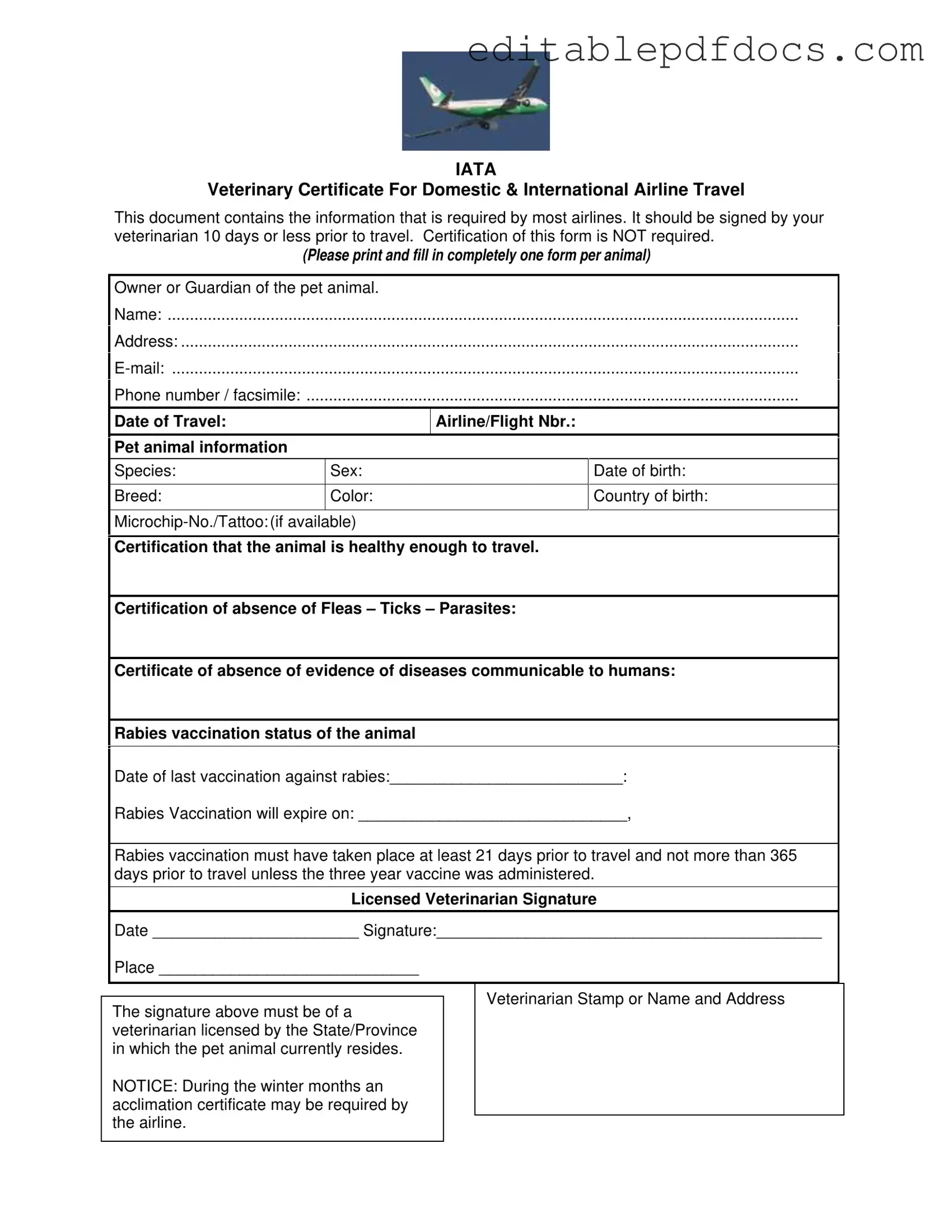Filling out the Veterinary Certificate Travel form can be straightforward, but mistakes often occur. One common error is failing to sign the form. The veterinarian’s signature is crucial and must be dated within 10 days of travel. Without this, airlines may reject the document.
Another frequent mistake is incomplete information about the pet. Each section, including the owner’s name, address, and contact details, must be filled out thoroughly. Missing details can lead to confusion and delays at the airport.
People often overlook the importance of the rabies vaccination status. It’s essential to provide the date of the last vaccination and ensure it meets the required timeline. The vaccination must have occurred at least 21 days before travel and not more than 365 days prior, unless a three-year vaccine was given.
Additionally, many forget to include the microchip number or tattoo if available. This information helps in identifying the pet and can be critical if the animal gets lost during travel.
Another mistake involves not checking the airline’s specific requirements. Some airlines may have additional documentation needs, such as an acclimation certificate during winter months. Failing to research these requirements can lead to unexpected complications.
People sometimes neglect to provide accurate flight details. The airline and flight number should be included to ensure the information is aligned with travel plans. Inaccurate details can cause issues at check-in.
Lastly, individuals may not realize that the veterinarian must be licensed in the state or province where the pet resides. Using a signature from an unlicensed veterinarian can invalidate the certificate, resulting in travel disruptions.
By avoiding these common mistakes, you can ensure a smoother travel experience for both you and your pet. Double-checking the form can save time and prevent unnecessary stress at the airport.
